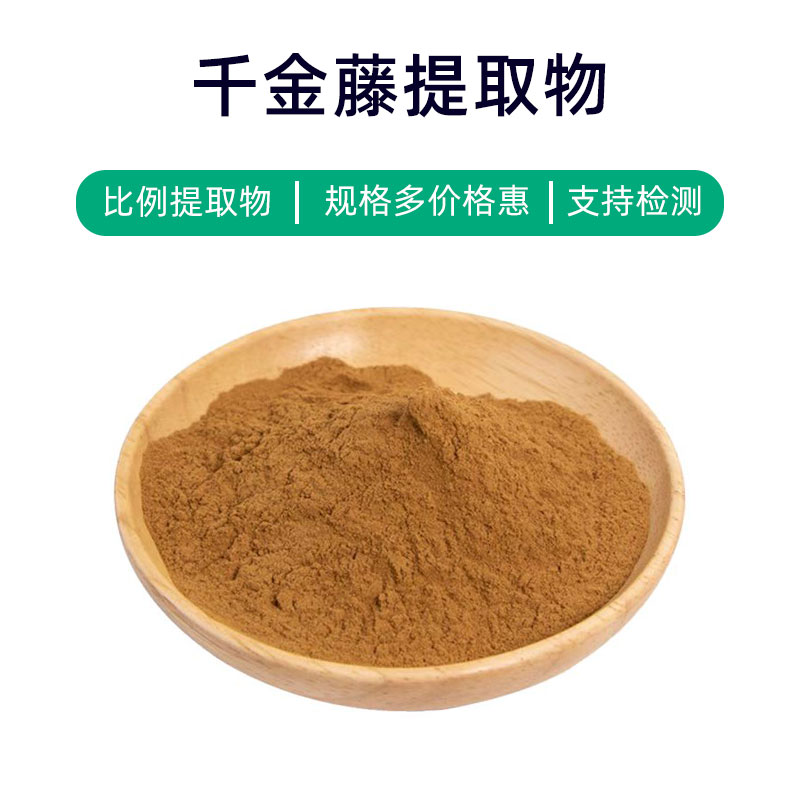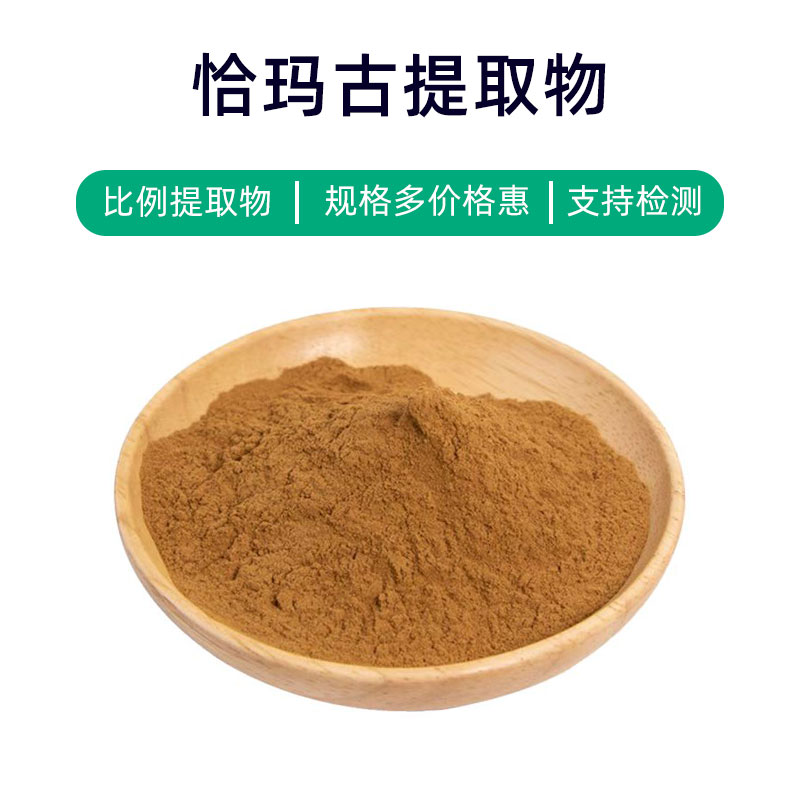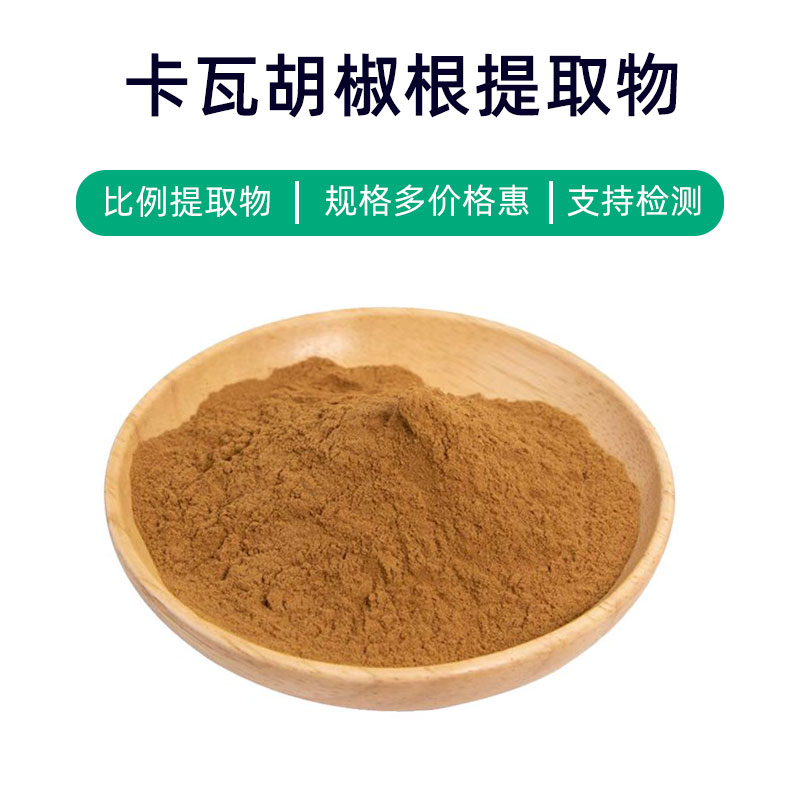Introduction to Pycnogenol Extract
Pycnogenol extract is a natural plant extract derived from the Angelica sinensis plant. Its main components include ligustilide, fatty oil, volatile oil, etc. Its efficacy is mainly reflected in promoting blood circulation to regulate menstruation and nourishing blood to replenish qi. In the medical field, pycnogenol extract is commonly used to regulate irregular menstruation and relieve menstrual pain in women. It helps improve blood circulation, relieve menstrual pain symptoms, and promote overall health. In addition, pycnogenol extract is also widely used in the health product and cosmetic industries. In health products, it is often used as an ingredient for women's conditioning and beauty, helping to improve skin texture, regulate the endocrine system, and enhance immunity. In cosmetics, pycnogenol extract is commonly used in skin - care products, which can moisturize the skin, improve skin tone, and has antioxidant and anti - aging effects. Due to its natural plant extraction, it is safe and reliable, and is favored by consumers.
Production Process of Pycnogenol Extract
The production process of pycnogenol extract usually includes the following steps:
- Raw Material Preparation: Select high - quality Angelica sinensis plants as the raw material for the extract. Wash and dry them to ensure that their quality meets the requirements.
- Crushing and Grinding: Crush and grind the dried Angelica sinensis plants to increase the extraction efficiency and surface area.
- Extraction: Use a suitable solvent (such as ethanol, water, etc.) to extract the crushed Angelica sinensis plants. Commonly used extraction methods include maceration extraction and ultrasonic extraction to extract the active ingredients.
- Filtration: Filter the extraction liquid through a filter screen to remove plant residues and impurities, obtaining a clear extraction liquid.
- Concentration: Use evaporation or vacuum concentration technology to remove the solvent from the extraction liquid and concentrate the extract.
- Crystallization or Precipitation: Sometimes, the concentrated extraction liquid will crystallize or precipitate. It can be separated and collected through appropriate treatment methods.
- Drying: Dry the extract to remove the residual moisture, ensuring the stability and quality of the product.
- Packaging: Package the dried pycnogenol extract. Common packaging methods include sealed bags and bottles to ensure the shelf life and quality of the product.
The above is the typical production process of pycnogenol extract. Each step needs to be strictly controlled to ensure the quality and safety of the final product.
Efficacy, Function, and Side Effects of Pycnogenol Extract
Pycnogenol extract is a natural medicinal ingredient extracted from the traditional Chinese medicine Angelica sinensis, with various efficacy and functions:
- Regulating Women's Menstrual Cycle: Pycnogenol extract is widely used in the gynecological field. It can regulate women's menstrual cycles, relieve menstrual discomfort, regulate the menstrual cycle, and reduce symptoms such as menstrual pain.
- Improving Blood Circulation: Pycnogenol extract is rich in active ingredients that can promote blood circulation, increase blood flow, and improve microcirculation, helping to relieve symptoms such as fatigue and dizziness.
- Anti - inflammation and Pain Relief: Pycnogenol extract has good anti - inflammatory and pain - relieving effects and can be used to treat pain and inflammatory diseases such as rheumatoid arthritis, sprains, and fractures.
- Anti - aging: Pycnogenol extract contains abundant antioxidants that can scavenge free radicals, delay cell aging, and keep the skin young and smooth.
- Regulating Immune Function: Pycnogenol extract has the function of regulating the immune system, which can enhance the body's resistance and prevent respiratory infections such as colds and coughs.
- Improving Sleep Quality: Pycnogenol extract contains sedative ingredients that can soothe the nervous system, improve sleep quality, and relieve emotional disorders such as insomnia and anxiety.
- Improving Digestive Function: Pycnogenol extract has a certain protective effect on the digestive system. It can promote gastrointestinal peristalsis, increase digestive juice secretion, and improve problems such as loss of appetite and indigestion.
- Antibacterial and Antifungal: Pycnogenol extract contains various antibacterial ingredients that can inhibit the growth and reproduction of bacteria, fungi, and viruses, and has a certain antibacterial and anti - inflammatory effect.
Applications and Dosage of Anemarrhena Extract
Anemarrhena extract is widely used in the pharmaceutical, food, and cosmetic industries. Below are its main application scenarios and recommended usage:
1. Pharmaceutical Applications
- Oral Use: Anemarrhena extract can be used in the preparation of oral medications such as capsules, granules, and oral liquids. It is commonly used to regulate the female physiological cycle, improve blood circulation, and treat inflammation. The recommended oral dosage for adults is 300-500 mg per dose, 2-3 times daily, taken after meals.
- Topical Use: It can be used in external applications such as ointments and patches to treat rheumatoid arthritis, sprains, and bruises. The recommended usage is to apply an appropriate amount of Anemarrhena extract ointment to the affected area 2-3 times daily, massaging gently until absorbed.
2. Food Applications
- Flavoring Additive: Anemarrhena extract can be added to food seasonings such as condiments, seasoning powders, and beverages to provide a refreshing aroma and taste. The general usage should not exceed 0.1% of the total food weight.
- Beverage Production: It is used in functional beverages such as herbal teas and health drinks, offering immune regulation, physical enhancement, and anti-fatigue effects. The recommended intake is 100-200 ml per serving, 1-2 times daily.
3. Cosmetic Applications
- Skincare Additive: Due to its antioxidant and anti-aging properties, Anemarrhena extract is commonly added to skincare products such as creams, lotions, and masks to help maintain youthful and smooth skin. The usual addition rate is 1-5% of the total formulation.
- Fragrance Products: It is used in perfumes and aromatherapy products to impart a fresh and pleasant scent, promoting relaxation and mood enhancement. The addition rate varies based on product requirements.
When using Anemarrhena extract, it is important to follow the product instructions or a physician’s advice to avoid excessive or prolonged use, which may cause adverse reactions. Individuals allergic to Anemarrhena or with special conditions should use it with caution or avoid it entirely.
Source Plant, Distribution, and Growth Environment of Anemarrhena Extract
Anemarrhena (scientific name: Anemarrhena asphodeloides), also known as Onion Lily or White Onion Lily, is a perennial herbaceous plant belonging to the Liliaceae family. Below is detailed information on the source plant, distribution, and growth environment of Anemarrhena extract:
1. Plant Description
- Anemarrhena is a perennial herbaceous plant that grows in dry grasslands, hillsides, forest edges, and shaded, moist areas under trees. It features long, slender rhizomes, linear or strip-shaped leaves, and terminal panicle inflorescences with small white flowers. Its fruit is a capsule, and the seeds have wing-like appendages.
2. Distribution
- Anemarrhena is mainly distributed in northeastern, northern, northwestern, and southeastern China. It is commonly found in mountainous regions, grasslands, riverbanks, and forest edges. The plant thrives in moist soil and is highly cold- and drought-resistant.
3. Growth Environment
- Anemarrhena prefers environments with ample sunlight and high humidity and typically grows at altitudes between 500-1500 meters in mountain grasslands, hillside woodlands, and hilly terrains. It adapts well to various soil types, from loose sandy soil to fertile loam.
4. Reproduction Methods
- The plant mainly propagates through rhizome expansion and seed reproduction. It has a well-developed root system that allows it to anchor deeply in the soil, forming dense plant clusters. Mature seeds are dispersed by wind or animals to complete the reproductive cycle.
5. Growing Season
- The primary growing and reproductive season for Anemarrhena is from spring to summer. Proper temperature, humidity, and sunlight conditions are crucial for its growth and development.
In summary, Anemarrhena is a widely distributed herbaceous plant that thrives in mountainous and grassland areas across China. It prefers moist environments and has moderate soil requirements, making it a valuable plant for both medicinal and ornamental purposes.
Processing and Storage of Anemarrhena Extract
The processing and storage of Anemarrhena extract are critical to ensuring its quality and stability. The general processing steps include:
- Raw Material Preparation: Harvested Anemarrhena is washed and pretreated to remove impurities.
- Extraction Process: Common extraction methods include water extraction and ethanol extraction.
- Concentration and Purification: The extract undergoes filtration, concentration, and purification to enhance its purity.
- Drying and Storage: The final extract is either dried or frozen to maintain its stability and shelf life.
For storage, Anemarrhena extract should be kept in a cool, dry, and well-ventilated place, away from direct sunlight and high temperatures. Proper precautions should be taken to prevent moisture, dust, and contamination by foreign odors. Liquid extracts should be stored in sealed or dark bottles to minimize exposure to oxygen and light. During storage, regular inspections should be conducted to check for any unusual odors or signs of deterioration to ensure the extract maintains its quality and efficacy.
Monica Sun is a seasoned expert in the plant extraction industry with over a decade of experience in research and production. She specializes in the extraction and purification of plant active ingredients, focusing on driving innovation in natural product applications. Monica has participated in the development of multiple functional plant extracts, delivering high-value natural raw material solutions for the health food, pharmaceutical, and dietary supplement sectors.


















